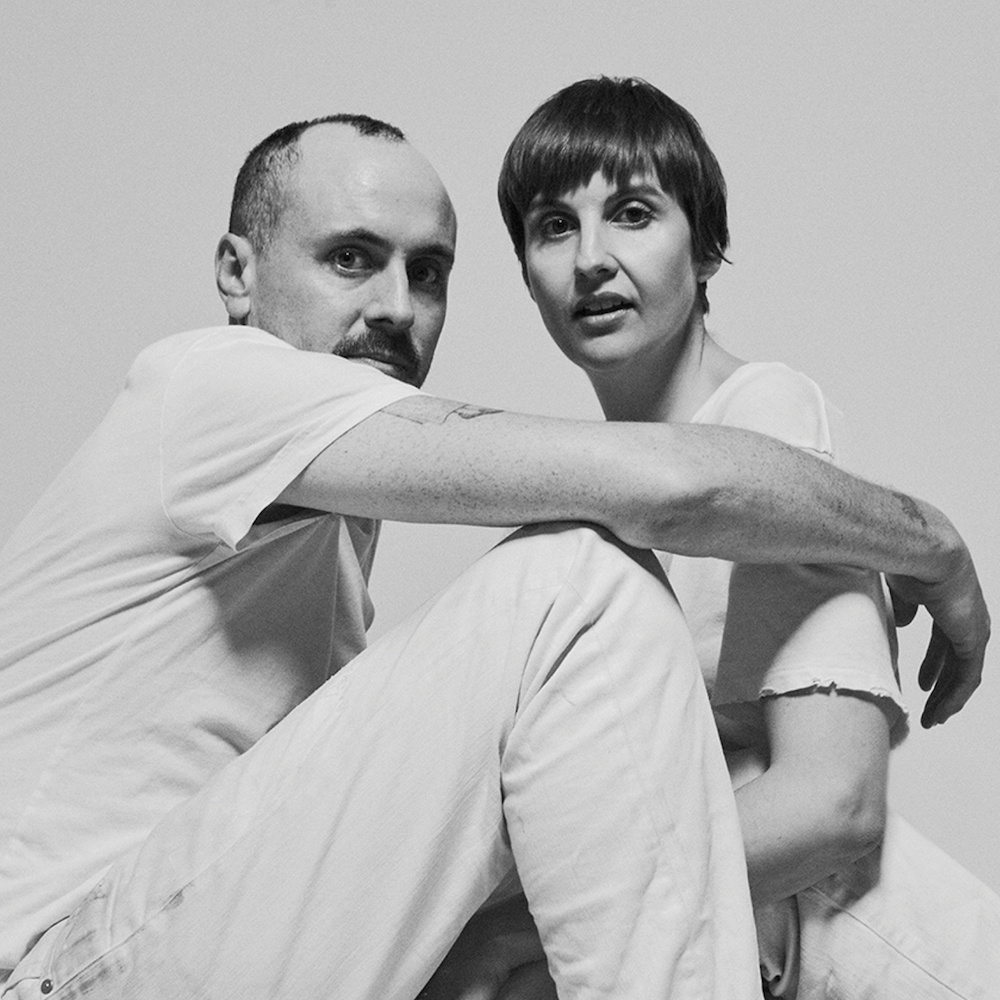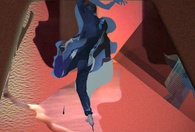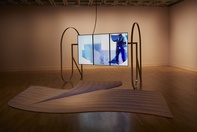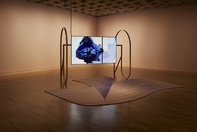nova Milne
New York
2019
Displayed 2019 at Art Gallery of New South Wales

nova Milne
Stephanie nova Milne
Born 1980, Sydney. Lives and works New York
Richard nova Milne
Born 1977, Toronto, Canada. Lives and works New York
nova Milne is a two-person artist who uses intimacy as their primary communal structure. Works may variously be described as video-sculptures, performance, drawings or restorative actions. These often find gravity in assembling a gesture (or encounter) as a poetic or disruptive transgression across a breach of time/s. nova Milne’s work often reincorporates found micro- historical or biographical ephemera, events or recordings to unleash a latent occult potential from its constituent parts, towards an altered psychological, social or confounding emotive and material plasticity. Intersubjectivity is an ongoing curiosity that segues into science and the paranormal, pervaded by transformation, longing, empathy, absurdity and unboundedness.
Photograph: Kylie Coutts
Artist text
by Isobel Parker Philip
nova Milne treat time and space as pliable putty. In their work, linear temporality bends back on itself and distinct physical worlds are superimposed on top of one another. So it is with Skin Without Biography (2011/19). A man and a woman – the artist duo themselves – dance with (and around) each other across three screens. But this duet has been doctored. The footage of the woman was taken eight years before that of her partner.
He follows her lead; their bodies intertwine and echo one another without ever fully synchronising. Moments of misalignment seep into the scene. The tussle between harmony and dissonance is kept in precarious balance, as the loop keeps playing and the dance begins again.
Even if it erupts anew, can a gesture that is inherited, that is an echo of and response to a long-lapsed routine, tether you to a past action, to a past feeling? Is this a kind of time travel? nova Milne toy with this conjecture. They intuit the potential for return in any choreographic context, not simply because they cross-contaminate timeframes but because they see the rotoscoping process – the animation technique they use to track a body in space – as a form of dance notation and a means of generating a new kind of choreography.
Dance notation is a method of transcribing and representing gesture using abstract symbols to denote the direction, duration and intensity of movement so that a particular choreographic sequence can be later reanimated. One of the most enduring notational schemes used in the western world was developed by choreographer and theorist Rudolf Laban in the 1920s. Laban’s strategies for coding movement were shaped by his observation that the space around a dancing body is as important as the body itself. Laban saw the space body, or Raumkörper1, as an active agent in modern dance, not a passive environment. It is a ‘plastic partner’2 that moves with the dancer.
The way the bodies in Skin Without Biography interact with their plastic partner has more to do with the logic of musical counterpoint than harmonic melody. In counterpoint, two voices are rhythmically distinct yet coexist within a score. As they fall in and out of step with one another, and with the rhythm of the soundtrack, the figures in this work push and pull against the space surrounding them. Everything converges momentarily before it collapses again.
I told nova Milne over Skype that I was considering referencing Laban in their artist text. They paused slightly (digital delay or dramatic effect?) before mentioning that they’d visited the Dance Notation Bureau Library in New York for another project and had stolen a look at Laban’s notational sequence for the black swan pas de deux in Swan Lake. In the margins of the document, in amongst the notation proper, the word ‘kiss’ was scrawled on the page like a rogue stage direction.
A kiss; an encounter where the edges and limits of one body fold into another, where form is conjoined and separate at the same time, where time can become entangled and elastic, as if played on a loop. Like the loop we are seduced into – that we are embraced by – in Skin Without Biography.
Notes
(1) Katherine Everett Gilbert, ‘Mind and medium in the modern dance’ in Roger Copeland & Marshall Cohen (eds), What is Dance? Readings in Theory and Criticism, Oxford University Press, New York, 1983, p.293.
(2) ibid., p.294.


